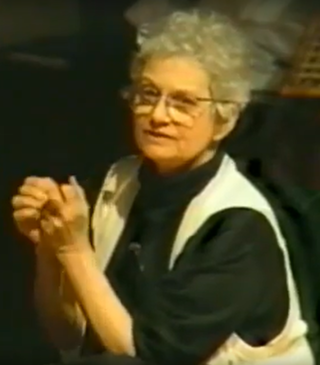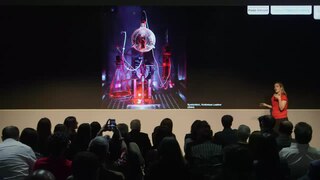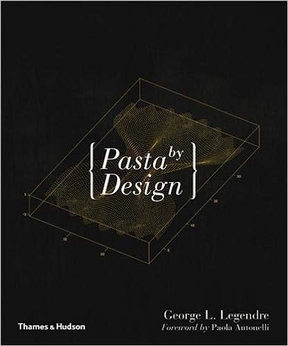Related Research Articles
Interaction design, often abbreviated as IxD, is "the practice of designing interactive digital products, environments, systems, and services." While interaction design has an interest in form, its main area of focus rests on behavior. Rather than analyzing how things are, interaction design synthesizes and imagines things as they could be. This element of interaction design is what characterizes IxD as a design field, as opposed to a science or engineering field.

Judith Stefania Donath is a fellow at Harvard's Berkman Center, and the founder of the Sociable Media Group at the MIT Media Lab. She has written papers on various aspects of the Internet and its social impact, such as Internet society and community, interfaces, virtual identity issues, and other forms of collaboration that have become manifest with the advent of connected computing.
Critical design uses design fiction and speculative design proposals to challenge assumptions and conceptions about the role objects play in everyday life. Critical design plays a similar role to product design, but does not emphasize an object's commercial purpose or physical utility. It is mainly used to share a critical perspective or inspire debate, while increasing awareness of social, cultural, or ethical issues in the eyes of the public. Critical design was popularized by Anthony Dunne and Fiona Raby through their firm, Dunne & Raby.

The Sacco chair, also called a bean bag chair,beanbag chair, or simply a beanbag, is a large fabric bag, filled with polystyrene beans, designed by Piero Gatti, Cesare Paolini and Franco Teodoro in 1968. The product is an example of an anatomic chair, as the shape of the object is set by the user. “[The Sacco] became one of the icons of the Italian anti-design movement. Its complete flexibility and formlessness made it the perfect antidote to the static formalism of mainstream Italian furniture of the period,” as Penny Spark wrote in Italian Design – 1870 to the Present.

Muriel Cooper was a pioneering book designer, digital designer, researcher, and educator. She was the first design director of the MIT Press, instilling a Bauhaus-influenced design style into its many publications. She moved on to become founder of MIT's Visible Language Workshop, and later became a co-founder of the MIT Media Lab. In 2007, a New York Times article called her "the design heroine you've probably never heard of".

Paola Antonelli is an Italian architect, curator, author, editor, and educator. Antonelli is the Senior Curator of Architecture and Design at the Museum of Modern Art (MoMA), New York, where she also serves as the founding Director of Research and Development. She has been described as "one of the 25 most incisive design visionaries in the world" by TIME magazine.

Carlo Ratti is an Italian architect, engineer, educator and author. He is a professor at the Massachusetts Institute of Technology where he directs the MIT Senseable City Lab, a research group that explores how new technologies are changing the way we understand, design and ultimately live in cities. Ratti is also a founding partner of the international design and innovation office CRA-Carlo Ratti Associati, which has offices in Turin, New York and London. He is also a Distinguished Professor in the Department of Architecture, Built Environment and Construction Engineering at the Politecnico di Milano and an Honorary Professor at TTPU Tashkent. Ratti was named one of the "50 most influential designers in America" by Fast Company and highlighted in Wired magazine's "Smart List: 50 people who will change the world".
Arturo Vittori, is an Italian artist, architect, and industrial designer. He is co-founder and director of the architecture and design team Architecture and Vision.

Objectified is a feature-length documentary film examining the role of everyday non-living objects and the people who design them, in our daily lives. The film is directed by Gary Hustwit. Objectified premiered at the South By Southwest Festival on March 14, 2009.

Neri Oxman is an Israeli-American designer and former professor known for art that combines design, biology, computing, and materials engineering. She coined the phrase "material ecology" to define her work.

The École cantonale d'art de Lausanne (ÉCAL) is a university of art and design located in the Renens suburb of Lausanne, Switzerland. It was founded in 1821 and is affiliated with the University of Applied Sciences and Arts of Western Switzerland (HES-SO). The designer Alexis Georgacopoulos is the director of ÉCAL.

Sascha Pohflepp was a German artist, designer, and writer whose work focused on the role of technology’s influence on the environment, often collaborating with scientists and other artists to explore this theme.

Fiona Raby is a British artist and University Professor of Design and Social Inquiry at The New School. She served as professor of Industrial Design at the University of Applied Arts Vienna. She was also a member of the research and teaching staff at the Royal College of Art (RCA) from 1994 to 2015. She left to focus on her partnership with Dunne & Raby. Her work, in collaboration with partner Anthony Dunne, is part of the Museum of Modern Art's (MoMA) permanent collection.
Design fiction is a design practice aiming at exploring and criticising possible futures by creating speculative, and often provocative, scenarios narrated through designed artifacts. It is a way to facilitate and foster debates, as explained by futurist Scott Smith: "... design fiction as a communication and social object creates interactions and dialogues around futures that were missing before. It helps make it real enough for people that you can have a meaningful conversation with".

Jinjoon Lee FRSA is a professor and contemporary artist exploring the liminoid experience of utopian space ideologies with new technologies.

Anthony Dunne is a critical designer, educator and founder of the art group Dunne and Raby. He runs the studio with his long term partner and collaborator Fiona Raby.
Cathrine Maclennan Kramer is a Norwegian artist, designer and curator.
Speculative design is a design practice that is concerned with future design proposals of a critical nature. The term "speculative design" was popularised by Anthony Dunne and Fiona Raby as a subsidiary of critical design. The aim is not to present commercially-driven design proposals but to design proposals that identify and debate crucial issues that might happen in the future. Speculative design is concerned with future consequences and implications of the relationship between science, technology, and humans. It problematizes this relation by proposing provocative future design scenarios where technology and design implications are accentuated. These provocative design proposals are meant to trigger the debate about future challenges. Speculative design proposals might seem subversive and irreverent in nature as they are meant to initiate discussions not to be market products.

Pasta by Design is a book by George L. Legendre, with a foreword by Paola Antonelli, and photography by Stefano Graziani. It is based on an idea by Marco Guarnieri.
References
- ↑ Paola Antonelli [@curiousoctopus] (March 2, 2015). "Tony Dunne & Fiona Raby leave RCA Design Interactions Their tenure changed course of design" (Tweet) – via Twitter.
- ↑ "Fiona Raby | Parsons School of Design".
- ↑ "Anthony Dunne | Parsons School of Design".
- ↑ The Independent, Dec 16, 2000.
- ↑ "Introducing the Media Lab Award". 17 July 2015.
- ↑ moma.org (Work made in collaboration with Michael Anastassiades)
- ↑ images.vam.ac.uk [ permanent dead link ]
- ↑ Susan M. Pearce, Exploring Science in Museums, Continuum International Publishing Group, 1996, p187. ISBN 0-485-90001-7
- ↑ "centrepompidou.fr (French language)". Archived from the original on 2011-06-10. Retrieved 2008-01-13.